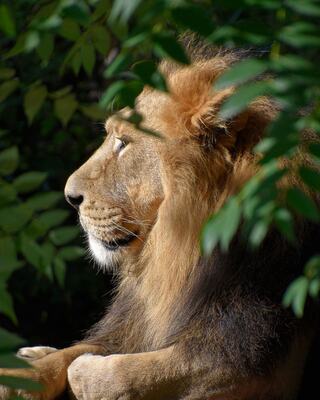Oglebay Good Zoo

Where Wonder and Wildlife Meet
Experience West Virginia’s only zoo accredited by the Association of Zoos and Aquariums (AZA), a distinction held by fewer than 10% of zoos nationwide. From up-close animal encounters to engaging educational programs, every zoo visit fosters a love for wildlife while supporting animal conservation.
Open Daily | 10 AM – 5 PM
$17 | Adults (13+)
$13 | Children (3-12)
Free | 2 & Under
Zoo Highlights
- Animal Encounters
- Animal Conservation Practices
- Train Rides
- Jumbo Jumper
- Multiple Playgrounds
- Shopping
- Refreshments
Wild Encounters Await
Visit West Virginia’s only AZA-accredited zoo, and connect with over 68 species, including rare and endangered animals.









Wild Encounters Await
Visit West Virginia’s only AZA-accredited zoo, and connect with over 68 species, including rare and endangered animals.

Get Ready To Roar
Experience the thrill of the roar with the arrival of lions at Oglebay Zoo in 2026. This one-of-a-kind exhibit will feature immersive experiences, educational adventures, and the chance to come face-to-face with one of nature’s most iconic animals.
- First-of-its-Kind in the Nation - The first AZA-accredited zoo in the U.S. to offer an up-close lion experience in a breathtaking, natural setting.
- Largest in the Region - One of the biggest lion habitats in the eastern U.S.—and the only one in West Virginia.
- Stay at Base Camp Villas - Luxury villas with front-row views, exclusive lion encounters, night tours, and premium amenities.
- Learn & Preserve - Partnering with AZA’s African Lion SAFE program to protect lions and educate guests on conservation efforts.
Become a member of the zoo today.
This project is made possible by Flip West and family, whose extraordinary generosity and vision have been the cornerstone of this remarkable initiative. We are also grateful to the Colcom Foundation, Helen J. Prince Foundation, and many other thoughtful supporters for their contributions. To ensure the success of this project and the ongoing preservation of these majestic creatures, additional support is needed.





